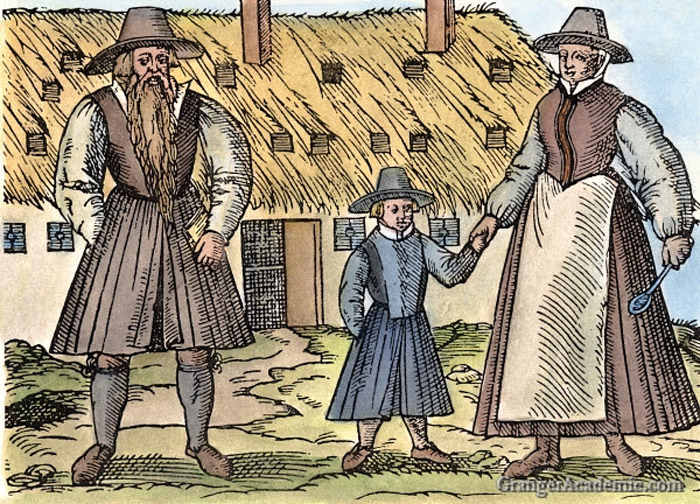Have you ever wondered about the differences between Mennonites, Hutterites, the Amish and Swiss Mennonites in America? They are all Anabaptists, but the Hutterites and Amish are not Mennonite. They are more communally based in their living, while the village base of Mennonite society is quite fluid today. They overlap in many ways, but each group has a distinct history, values, and religious traditions.
For over 100 years Hutterites have lived in the prairies of Canada, while some Amish in recent years have moved to Manitoba for the first time. The price of land in Ontario makes it very difficult to expand or start new farms and settlements. The Amish are more conservative and work to keep life as simple and slow as is reasonably possible. At Mennonite Heritage Village (MHV) we appreciate these different groups and believe that the more we know about our neighbours the more we can bless each other and find ways to work together.
As Anabaptists they all furthered the protestant reformation that Martin Luther began in 16th century Europe. They reject infant baptism and instead practice adult baptism, believe in separation of church and state and value the way of peace. The term “Mennonite” comes from the name of Dutch Anabaptist leader Menno Simons, who helped to lead the movement in the 16th century. “Hutterite,” on the other hand, comes from the name of religious leader Jakob Hutter, who founded an Anabaptist community in what is now modern-day Slovenia and Austria in the 16th century. Each group also has its own language that is different than German and Mennonite Low German.
Huetterisch: An oral language spoken by Hutterites in everyday conversation. In church services, High German is used. Its origins are from the province of Carinthia, Austria. Jacob Hutter born in 1500, became an early Anabaptist leader, and was burned at the stake in Innsbruck, Austria in 1536. Hutterites migrated to Moravia, Romania, Hungary, and South Russia. Hutterites were almost wiped out in Europe. But some survived. After 1878, several hundred moved to South Dakota. After 1918, seeking more freedom, hundreds moved to Canada, mainly to Alberta and Saskatchewan. They practice communal living.
Amish: They speak an everyday oral language called Pennsylvania Deutsch (Dutch is not correct) that originated as a dialect in Switzerland. Conrad Grebel in Switzerland was one of the key founding Anabaptists for them. In 1693 there was a schism when the group divided and followed Jakob Amman from whom the group got its name. At the beginning of the 1700s, a group moved to Pennsylvania. After 1825 a group moved to Ontario. The Amish learn English in school. Many Amish still use the High German in worship.
Swiss Mennonite: Their Anabaptist origins are in Switzerland who followed Felix Manz (1525) and others. Many were persecuted and killed. Some moved to the Palatinate in Germany, and others to Pennsylvania in the early 1700s. After 1800, several thousand moved to the Waterloo, Ontario area. Today many from this group belong to Mennonite Church Canada after they merged with the General Conference Church. Fewer speak their original language, which is Pennsylvania German, which has similarities to what the Amish speak. Swiss Mennonites did not migrate through Poland and Russia.




